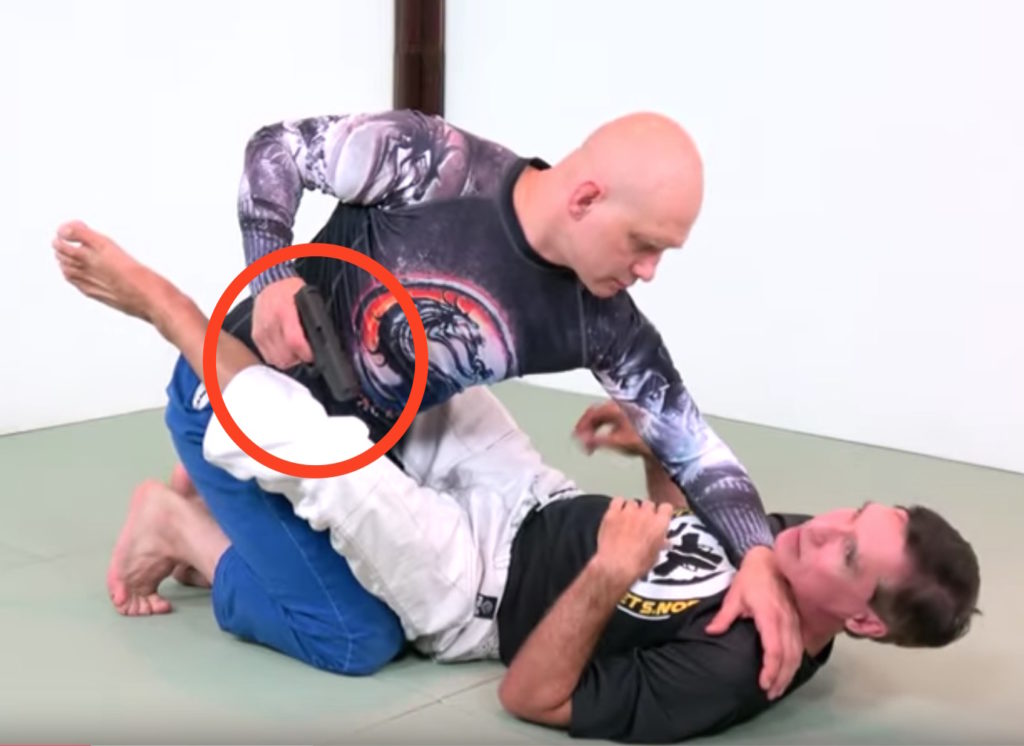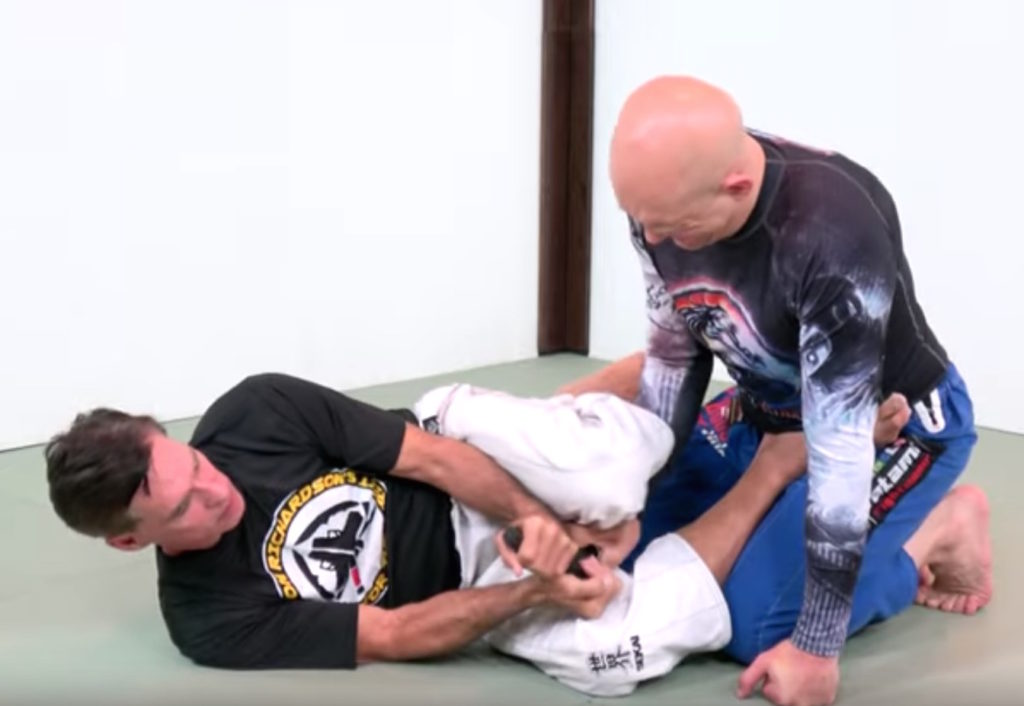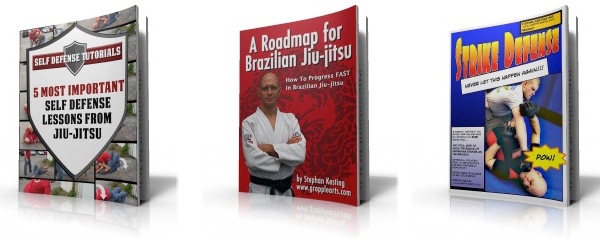
If you’re on the bottom using your guard in a submission grappling situation then the single worst thing that can happen is that the other guy drops back and locks on a heel hook submission, forcing you to tap out or suffer a potentially serious ankle or knee injury.
If you’re using your guard in an MMA situation then the worst thing that can happen is that you get hit with a super powerful haymaker or elbow that knocks you out, possibly breaking some facial bones in the process.
But in a streetfight the worst thing that can happen is that the other guy draws a weapon like a handgun.
This truly is the worst case scenario because if that gun gets pointed at you and that trigger gets pulled then – BOOM – you’re now potentially dead.
Weapons therefore have to be a HUGE priority when you’re training BJJ for the street.You always have to anticipate the weapon draw…
The possibility of weapons changes almost everything – you always have to be ready to get out of the line of fire and absolutely have to have control of the arms (even if that means eating a punch or two) and much more…
In this video BJJ black belt and self defense expert Burton Richardson takes you though some of his favourite techniques and training methods to give you the best chance of surviving a gun grappling situation.
Some of Burton’s key takeaways in the video above include…
Expecting the Weapon and Recognising the Draw
You do NOT want to be surprised by the sudden appearance of a weapon.
Therefore expecting the weapon and recognising the draw become incredibly important.
However although you may intellectually be aware that weapons could exist in a street situation, if you don’t ever train for it (i.e. if you’re always rolling time without any weapons involved) then your awareness won’t be primed.
To condition you to reflexively look for the weapon draw you should definitely occasionally include weapons in your jiu-jitsu training.
And to do that you need to spar…
Sparring with weapons on the ground
Sparring your techniques against resistance is one of the most important aspects of training BJJ. And you can use that training method even when there are weapons involved.
There are a couple of main drills you should use when using your techniques against resistance…
One method of training starts with one person on the bottom, the gun already drawn, and the grips already established.
Both partners then fight for control over the weapon, mixing that in with other sweeps, submissions and attacks. This allows a lot of play and experience with controlling the grip and the line of fire.
Another method of training involves training ‘regular’ jiu-jitsu but having a hidden weapon on one (or both) of the participants. One person can draw his weapon at any point, at which point your entire priority becomes controlling the grip.
You can even do this with one person simply giving you the cue for a draw (reaching behind them, pulling up a shirt and reaching into their waistband, etc) and you react to that by immediately gripfighting for that wrist and hand.

Controlling the Line of Fire
If the gun has already been drawn then your first priority is to control the line of fire. This is most often accomplished by grabbing the barrel and pointing it away from you.
Then you might also use hip movement to get your body even further off the line of fire, just in case that gun goes off in the struggle.
Prevent the Retraction
If you grab someone’s gun their typical reaction will be to pull it away from you HARD, trying to get out of your grip and closer to their body where they can control it better.
Therefore your next priority is to control the retraction of his hand so he can’t pull his hand back and get a bead on you with his weapon. This ends up looking a bit like a Thai clinch except you’re crossing your hands at the wrist.
Isolate the Weapon Limb
Next you need to isolate the arm so it can’t move around.
In the video Burton shows a few different ways to do this, including a) turning onto your side, dropping your top knee down onto his wrist to bend it, and then prying the gun upward and out of his grip, and b) climbing your legs up into a high guard around his shoulders.
Either way you’re taking the slack out of the system which then makes it much easier to twist the guy out of his hand.
Training Safety
It’s really important NOT to use a real pistol when you’re training this stuff – use a rubber replica instead.
Also the man with the weapon should NOT put his finger into the trigger guard. This inevitably results in finger injuries when you’re training these techniques,.
It’s much safer for the guy holding the training gun to take an unrealistic grip and put his finger on the OUTSIDE of the trigger guard. This’ll keep his trigger finger safe and attached to his body when things get heated.
The presence of a handgun on the ground changes everything. Training for this before it happens gives you the best chance of survival!
Get My FREE Self Defense Tips by Email
I put out a TON of my best self defense tips in my email newsletter.
This service is completely free, and you can easily unsubscribe at any point with a single click.
If you sign up you’ll also get to download ALL the resources in our member area, including
- The 5 Most Important Self Defense Lessons from Jiu-Jitsu (23 page PDF)
- A Roadmap for Brazilian Jiu-Jitsu (34 page PDF)
- Strike Defense Comic Book (4 page PDF)
Get these books and also my very best self defense tips for free by by entering your email below…
